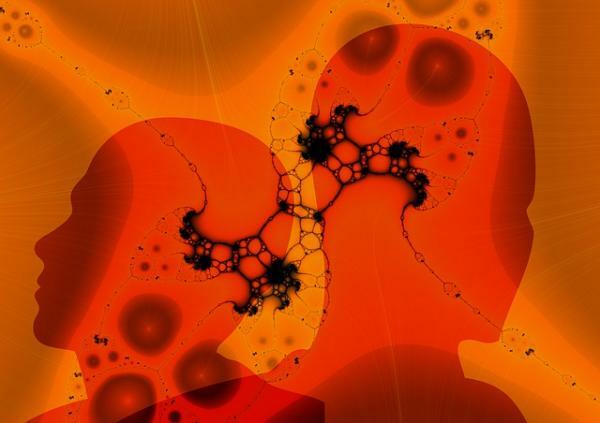
Sexual violence is a serious and widespread public health problem that affects communities and society as well as its victims and loved ones. Women and children are the ones who suffer it to a greater extent and men are the ones who also commit it to a greater extent, although the victims of this type of violence are of all types of gender, age, sexual orientation, ethnicity, socioeconomic class and ability intellectual.
In addition, the victims have another great added problem: that of silence. Often the victims of these situations do not know how to act, feel ashamed and even do not recognize acts as sexual violence because of how some issues are normalized or minimized in society. As a result of this, many people do not report, they do not report to the courts what has happened to them. In this online Psychology article we will briefly address what is sexual violence, what are the causes and consequences and how we can prevent it.
Index
- What is sexual violence
- Causes of sexual violence
- Consequences of sexual violence
- Prevention of sexual violence: 3 strategies
What is sexual violence.
The World Health Organization (WHO) defines the sexual violence What: “Any sexual act, the attempt to consummate a sexual act, unwanted sexual comments or innuendo, or actions to market or otherwise using a person's sexuality under duress by another person, regardless of their relationship with the victim, in any environment, including the home and workplace ”.
The coercion you refer to may include:
- Use of varying degrees of force
- Psychological bullying
- Extortion
- Threats (for example physical harm or not getting a job or qualification, etc.)
It is important to emphasize that there may also be sexual violence if the person is not in a position to give consent, that is, if you are under the influence of alcohol or drugs, if you are minor, if you mentally incapacitated or asleep and that past sexual contact does not necessarily imply future consent.
Some forms of sexual violence are as follows:
- Violation
- Sexual assault
- Incest
- Child sexual abuse
- Rape committed by a boyfriend / girlfriend or acquaintance
- Grabbing, lewd touching, or fondling
- Sending sexual texts without permission
- Ritual abuse
- Commercial sexual exploitation (for example, prostitution)
- sexual harassment
- Sexual or homophobic harassment. Here you can see the different types of homophobia, their causes and consequences.
- Exposure of genitalia or private parts and voyeurism
- Forced participation in the production or viewing of pornography
- Any other unwanted sexual act: stares, lewd comments ...
Causes of sexual violence.
Finding out the causes of sexual violence is a complex task given the large number of forms that this type of violence takes and the large number of contexts in which it occurs. It is therefore advisable to analyze the different typologies individually to achieve greater explanatory precision about the specific causes, below we will see some examples.
In the specific case of sexual violence directed at women, there is an explanatory model that encompasses both individual and relational, community and social factors: the model ecological. This model tells us that the four factors mentioned interact with each other, leading to sexual violence against women. As an example, in a study focused on factors that increase the risk of men committing rape (a specific typology of sexual violence) towards a woman resulted in the following data:
Individual and relational factors
- Gang membership.
- Harmful or illegal use of alcohol or drugs.
- Antisocial personality.
- Exposure in childhood to violence between parents.
- History of physical or sexual abuse in childhood.
- Little education.
- Acceptance of violence (for example, believing that hitting one's wife or girlfriend is acceptable).
- Multiple partners or infidelity.
- Opinions favorable to gender inequality.
Community and social factors
- Traditional and social norms favorable to male superiority (for example, considering that sexual relations are a man's right in the marriage, that women and girls are responsible for keeping men's sexual desires in check, or that rape is a sign of masculinity).
- Lax legal and community sanctions against violence.
In the specific case of sexual abuse of minors There are other explanatory risk factors different from those of women. Save the Children produced a Guide to sexual violence against children. Child sexual abuse and exploitation which specified the following:
Social factors
- Do not consider the child as a subject who has a series of rights.
- Abuse of power and validation of violence in close relationships.
- Tolerance for certain forms of aggression, physical, psychological or sexual.
- Lack of knowledge about the repercussions and consequences of this type of experience in childhood for the proper development of individuals. Here you will find the Consequences of child psychological abuse.
- Cultural environments that allow and promote marriage at a very early age.
- Excessive consumption of alcohol and drugs.
Family factors
- Family structures where unequal power relations exist.
- Gender violence.
- Emotional distance.
Personal factors
In the case of the aggressor:
- Exposure to violence during childhood.
- Cognitive distortions.
- Little capacity or lack of empathy.
- Personality disorders.
- Consumption of child pornography.
If the actions were repeated we could speak of pedophilia, a disorder of sexual behavior.
If we talk about origin of sexual violence towards any victim, we find three main factors:
Psychological factors
- The impossibility of getting arousal without the use of violence.
- Lack of self-control.
- A deficient self-esteem.
- The absence of sexual empathy, which can lead to a cognitive distortion that justifies her aggression (“she / he likes it”, “she has looked for it”, “sex with children is giving them affection” ...).
- Some personality disorder.
- A personal history as a victim of abuse.
Social factors
Very important when we talk about violence against women, the prestige that violence gives in certain groups and communities as an expression of virility, the objectification of women through the media, gender discrimination and everyday sexist language.
Situational factors
Consumption of drugs and alcohol, the emotional contagion of the group experience, the victim-perpetrator closeness and the desolation of spaces considered conducive to attack.
The sum of all these variables or some of them is what would give rise to sexual violence. Still, there are many more hypotheses and explanations that are worth investigating if the topic interests you.
Also emphasize that often the person who commits an act of sexual violence towards another is usually an acquaintance of the victim, either a friend, coworker, neighbor, intimate partner or spouse, family member or person in a position of authority and influence for the victim.
Consequences of sexual violence.
The consequences of sexual violence are varied and affect both the victim who suffers it and their loved ones, communities and society.
Impact on survivors
Regardless of whether the assault occurred recently or many years ago, it can affect daily life. Each victim reacts uniquely to sexual violence, both long-term and short-term, as there are consequences for both time periods. Common emotional reactions include guilt, shame, fear, numbness, shock, and feelings of isolation.
The psychological effects of sexual violence have been related to long-term risky health behaviors. Reactions can vary from post traumatic stress disorder (PTSD), Eating Disorders, the anxiety disorders and the mood disorders. The physical impacts range from personal injury to pregnancy concerns or sexual illness. The economic ones include medical and non-work expenses.
The consequences for victims include several domains: somatic consequences such as chronic diseases or acute medical, psychological consequences such as problems of social adjustment, sexual, discomfort, changes cognitive... and consequences or psychophysiological reactions such as cardiac or muscular reactions when memories appear, startles... In serious cases, the consequences can be so painful that they end in suicide, murder of the aggressor ...
Impact on loved ones
Fathers, mothers, friends, couples... While trying to make sense of what happened, loved ones often experience reactions similar to those of survivors. Fear, guilt, self-blame and anger are the most common reactions.
Impact on communities
When sexual assault happens in your community, you can create a atmosphere of fear, anger, or disbelief in schools, workplaces, neighborhoods, universities, and among cultural or religious communities. In addition, there are economic costs for the communities (medical, lawsuits ...)
Impact on society
Sexual violence endangers essential social structures because it creates a climate of violence and fear. People who suffer from it see their jobs, their studies and all kinds of activities in society interrupted in which they can be disabled.
Prevention of sexual violence: 3 strategies.
In the past the methods for combat sexual violence focused on the criminal justice system to a large extent, it is now known that this type of violence does not It is the consequence of a single factor but of the interaction of several in which the society. From a public health perspective, community and social factors may be the most important in identifying ways to prevent sexual violence before it occursas society and culture can support and perpetuate beliefs that condone violence.
According to the WHO, some of the strategies would be the following:
- Help: provide a comprehensive response to the needs of surviving victims.
- Education: Expand the knowledge base and raise awareness about sexual violence.
- Legal: promote legal reforms, such as:
- Strengthening and expanding the laws that define rape and sexual assault
- Sensitization and training of police and judges about sexual violence
- Better enforcement of existing laws.
And remember, if you suffer any act of sexual violence:
- Get safe.
- Get help.
- Get medical attention.
Sexual violence is a serious public health problem and we all must participate in its prevention. It is one of the most degrading violence that exists due to the medical and psycho-emotional implications that it entails, affecting dignity and legal rights such as freedom.
This article is merely informative, in Psychology-Online we do not have the power to make a diagnosis or recommend a treatment. We invite you to go to a psychologist to treat your particular case.
If you want to read more articles similar to What is sexual violence and how to prevent it?, we recommend that you enter our category of Legal psychology.
Bibliography
- Pennsylvania Coalition Against Rape. Sexual Violence: Information for Teens and Their Communities. Recovered from: https://www.pcar.org/sites/default/files/pages-pdf/sexual_violence_and_teens_brochure_spanish.pdf
- Overview of sexual violence. USA: Medine Plus.Recovered from: https://medlineplus.gov/spanish/ency/article/001955.htm
- Gomez, E. & Juárez, E. (2014). Sexual crime.Journal of the Institute of Legal Sciences of Puebla, Mexico.(34), 141-165.
- National Sexual Violence Resource Center. (2016). The impact of sexual violence. Recovered from: https://www.nsvrc.org/sites/default/files/2016-04/saam_2016_el_impacto-de-la-violencia-sexual_0.pdf
- World Health Organization. (2013) Understanding and addressing violence against women. Recovered from: https://apps.who.int/iris/bitstream/handle/10665/98821/WHO_RHR_12.37_spa.pdf; jsessionid = 2C3A63A9D177E0C4D531595831C4D59C? sequence = 1
- Ramos, L. & Saltijeral, M.T. & Romero, M. & Caballero, M.A. & Martínez, N.A. (2000). Sexual violence and associated problems in a sample of users of a health center.SciELO, Public Health.(43), 182-191.


